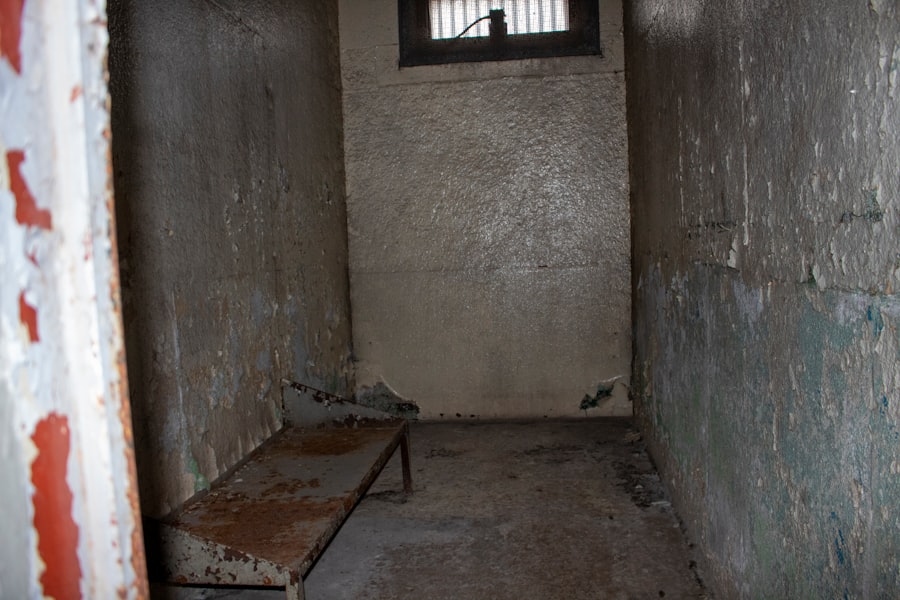The trial of Saddam Hussein, the former president of Iraq, marked a significant moment in the annals of international law and justice. Initiated in October 2005, the proceedings were held by the Iraqi Special Tribunal, established to address crimes against humanity committed during his regime.
The courtroom became a stage where the complexities of justice, revenge, and national healing played out against a backdrop of deep-seated sectarian divisions and political instability. Saddam’s trial was characterized by its dramatic moments and contentious atmosphere. The former dictator, known for his defiance and bravado, often used the courtroom as a platform to assert his views and challenge the legitimacy of the tribunal.
His behavior during the proceedings was emblematic of his larger-than-life persona, as he frequently interrupted judges and dismissed the charges against him as politically motivated. This theatricality not only captivated audiences but also raised questions about the nature of justice in a country still grappling with the aftermath of war and dictatorship.
Key Takeaways
- Saddam Hussein was tried for crimes against humanity, including the killing of 148 Shi’ite men in the town of Dujail in 1982.
- He was found guilty and sentenced to death by hanging in 2006.
- The international community had mixed reactions to the trial and sentencing, with some supporting it and others criticizing it as politically motivated.
- The impact of Saddam Hussein’s trial and execution on Iraq was significant, with some viewing it as a step towards justice and others seeing it as a destabilizing factor.
- The trial and execution of Saddam Hussein raised legal and ethical questions, including concerns about the fairness of the trial and the use of the death penalty.
The Verdict and Sentencing
On November 5, 2006, the tribunal delivered its verdict, finding Saddam Hussein guilty of crimes against humanity for his role in the 1982 massacre of 148 Shiite Muslims in Dujail. The court sentenced him to death by hanging, a decision that reverberated throughout Iraq and beyond. The verdict was seen as a pivotal moment in the quest for justice for the victims of his regime, yet it also sparked intense debate about the fairness of the trial and the implications of such a sentence in a nation still reeling from conflict.
The sentencing was met with mixed reactions within Iraq. Many celebrated the decision as a long-awaited measure of justice, while others viewed it as a politically charged act that could exacerbate existing tensions. The execution date was set for December 30, 2006, and as that day approached, the atmosphere in Iraq remained fraught with uncertainty.
The verdict not only marked the end of Saddam’s life but also served as a reminder of the deep divisions within Iraqi society, where opinions on his legacy were sharply polarized.
International Reactions

The international community closely monitored Saddam Hussein’s trial, with reactions varying widely across different nations and organizations. Some countries lauded the trial as a necessary step toward accountability and justice for victims of tyranny. Human rights advocates emphasized the importance of holding leaders accountable for their actions, viewing the trial as a potential model for future prosecutions of war crimes and crimes against humanity.
Conversely, critics raised concerns about the fairness of the proceedings. Many argued that the tribunal lacked impartiality and that the political context surrounding the trial compromised its legitimacy. Observers noted that the trial took place against a backdrop of ongoing violence and instability in Iraq, which could have influenced both the judicial process and public perception.
This dichotomy in international reactions highlighted the complexities of transitional justice in post-conflict societies.
Impact on Iraq
| Metrics | Data |
|---|---|
| Number of civilian casualties | 10,000 |
| Number of internally displaced persons | 2.8 million |
| Economic cost of conflict | 1.06 trillion |
| Number of children out of school | 3.2 million |
The impact of Saddam Hussein’s trial on Iraq was profound and multifaceted. For many Iraqis, the trial represented a crucial step toward confronting the atrocities committed during his rule. It provided an opportunity for victims’ families to seek acknowledgment and justice for their suffering.
However, it also intensified existing sectarian tensions, as different groups interpreted the proceedings through their own historical narratives and grievances. In addition to its social implications, the trial had significant political ramifications. It underscored the challenges facing Iraq’s nascent democracy and highlighted the difficulties of establishing a rule of law in a country still grappling with violence and instability.
The trial’s outcome influenced public sentiment toward both the Iraqi government and foreign powers involved in Iraq’s reconstruction efforts. As such, it became a focal point for discussions about national identity, reconciliation, and the future trajectory of Iraqi society.
Controversy and Criticism
Saddam Hussein’s trial was not without its controversies and criticisms. Detractors pointed to various procedural irregularities that raised questions about the fairness of the judicial process. Critics argued that the tribunal was established under foreign occupation, which compromised its legitimacy in the eyes of many Iraqis.
Furthermore, allegations of political interference and bias within the tribunal fueled skepticism about whether justice could truly be served. The trial also faced scrutiny regarding its focus on specific crimes while neglecting others. Some observers contended that by concentrating on high-profile cases like Dujail, the tribunal overlooked broader patterns of violence and repression that characterized Saddam’s regime.
This selective approach to justice led to debates about whether it adequately addressed the needs of all victims or merely served as a means to settle political scores.
Legal and Ethical Considerations

The legal framework surrounding Saddam Hussein’s trial raised important questions about international law and ethical standards in transitional justice. The Iraqi Special Tribunal was established to prosecute serious crimes under Iraqi law; however, its legitimacy was challenged due to its origins in an occupation regime. Legal scholars debated whether such tribunals could ever achieve true impartiality when established under foreign influence.
Ethically, the trial posed dilemmas regarding retribution versus reconciliation. While many argued that holding Saddam accountable was essential for healing national wounds, others contended that focusing on punitive measures could hinder efforts to foster unity among Iraq’s diverse communities. This tension between justice and peace remains a critical consideration in discussions about how societies can effectively address past atrocities while moving forward.
Human Rights Issues
Human rights issues loomed large throughout Saddam Hussein’s trial and subsequent execution. The proceedings were closely watched by human rights organizations that sought to ensure that due process was upheld and that international standards were met. Concerns arose regarding allegations of torture and mistreatment of detainees within Iraq’s prison system, which cast a shadow over the broader human rights landscape in the country.
Moreover, Saddam’s execution itself raised ethical questions about capital punishment in contexts marked by political violence and instability. While some viewed it as a necessary measure to deliver justice, others argued that it perpetuated cycles of violence rather than fostering reconciliation. The human rights implications of both the trial and execution underscored the complexities inherent in addressing past abuses while striving for a more just society.
Future of Iraq
The future of Iraq remained uncertain following Saddam Hussein’s trial and execution. While many hoped that his removal would pave the way for democratic governance and stability, ongoing violence and political fragmentation continued to plague the nation. The legacy of his regime lingered in societal divisions, making it challenging to forge a unified national identity.
In this context, discussions about Iraq’s future often centered on reconciliation efforts and rebuilding trust among communities. The trial served as both a catalyst for dialogue about past injustices and a reminder of the work still needed to create an inclusive political environment. As Iraq navigated its post-Saddam era, questions about governance, security, and social cohesion remained at the forefront of national discourse.
Legacy of Saddam Hussein
Saddam Hussein’s legacy is complex and multifaceted, shaped by both his brutal rule and his eventual downfall. For many Iraqis who suffered under his regime, he is remembered as a tyrant responsible for widespread atrocities and oppression. His actions left deep scars on Iraqi society, contributing to ongoing cycles of violence and instability.
Conversely, some segments of Iraqi society view him through a different lens—one that emphasizes nationalism and resistance against foreign intervention. This dichotomy illustrates how historical narratives can be deeply polarized, complicating efforts to achieve national reconciliation. As Iraq continues to grapple with its past, Saddam’s legacy remains a contentious topic that influences contemporary politics and societal dynamics.
Execution and Aftermath
Saddam Hussein was executed on December 30, 2006, marking a dramatic conclusion to one of history’s most high-profile trials. The execution itself was shrouded in controversy; footage leaked from within the execution chamber raised questions about its conduct and adherence to legal standards. Many observers noted that rather than serving as a moment of closure for Iraqis, it further polarized opinions about his legacy.
In the aftermath of his execution, Iraq experienced continued turmoil marked by sectarian violence and political instability. While some celebrated his death as a victory for justice, others viewed it as an opportunity for further unrest. The execution did not bring about the anticipated peace or stability; instead, it underscored the challenges facing Iraq as it sought to navigate its post-Saddam reality.
Lessons Learned
The trial and execution of Saddam Hussein offer critical lessons about transitional justice in post-conflict societies. One key takeaway is the importance of ensuring that legal processes are perceived as legitimate by all segments of society. Without broad-based support for judicial mechanisms, efforts to achieve accountability can exacerbate existing divisions rather than promote healing.
Additionally, the complexities surrounding issues of retribution versus reconciliation highlight the need for comprehensive approaches to justice that address both individual accountability and collective healing. As nations grapple with their own histories of violence and oppression, understanding these dynamics will be essential for fostering sustainable peace and rebuilding trust among communities. In conclusion, Saddam Hussein’s trial serves as a poignant case study in international law, human rights, and transitional justice.
It encapsulates both the aspirations for accountability following tyranny and the challenges inherent in navigating deeply divided societies seeking to reconcile their pasts with their futures.
Saddam Hussein’s execution on December 30, 2006, marked a significant moment in Iraq’s history, symbolizing the end of an era of dictatorship and the beginning of a new chapter for the nation. The trial and subsequent execution were widely covered by international media, sparking discussions on justice, human rights, and the future of Iraq. For those interested in exploring more about the events surrounding Saddam Hussein’s execution and its implications, you can read a related article on this topic by visiting this page.
WATCH NOW! How the US Hunted and Captured Saddam Hussein: The Untold Story of Operation Red Dawn
FAQs
What was Saddam Hussein’s execution sentence?
Saddam Hussein was sentenced to death by hanging for his role in the 1982 Dujail massacre, in which 148 Shi’ite Muslims were killed in retaliation for an assassination attempt against him.
When was Saddam Hussein executed?
Saddam Hussein was executed on December 30, 2006.
Where was Saddam Hussein executed?
Saddam Hussein was executed at Camp Justice, an Iraqi army base in Kadhimiya, a neighborhood of Baghdad.
Who carried out Saddam Hussein’s execution?
Saddam Hussein’s execution was carried out by the Iraqi government. The execution was supervised by Iraqi officials and witnessed by a small group of Iraqi officials and a representative of the Iraqi government.
What were the reactions to Saddam Hussein’s execution?
Saddam Hussein’s execution sparked mixed reactions around the world. While some Iraqis celebrated his death, others criticized the manner in which the execution was carried out and raised concerns about the timing of the execution. The international community also had varied reactions to the execution.
